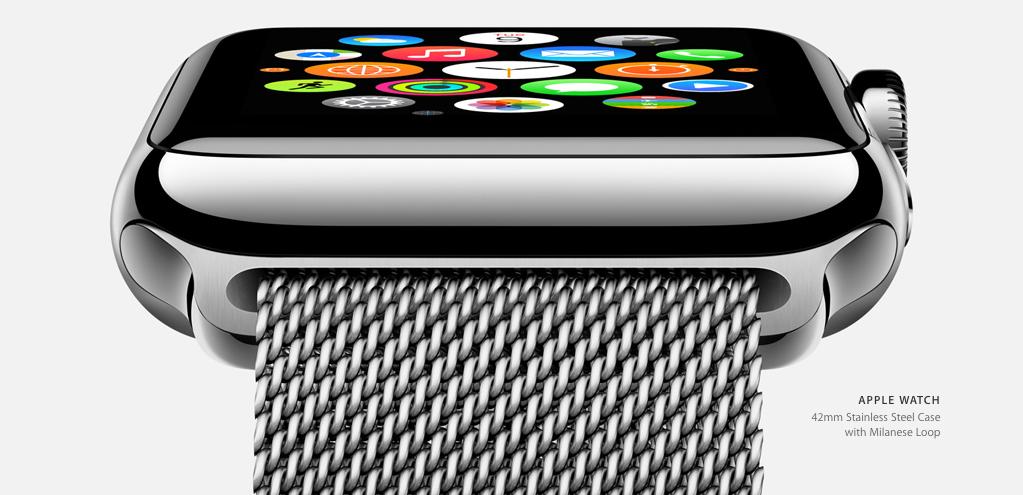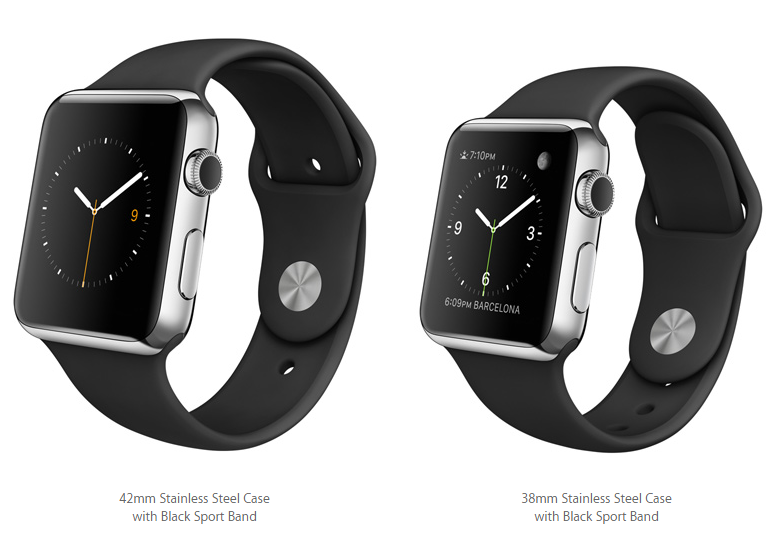By the time I publish this post, the internet and blogosphere would be swamped with Apple Watch written all over it.
So, why am I writing another post on this?
For a simple reason – my perspective is different. I think some of the advancements from Apple haven’t been discussed as much as they should have been. Please note that this is a data engineer’s perspective on Apple Watch.
The purpose of this article is not to review the watch (Sorry, the Apple Watch!) as a product. This article aims to bring out how Apple Watch would re-define Apple’s data warehouses and present a(nother) competitive edge to Apple in years to come.
Here are a few features of Apple Watch I want to call out as a data scientist:
Feature 1: Launch of Apple Watch heralds deep personalization for Apple’s customers:
Think of iPhones 2 years back – there used to be 1 or may be 2 models to choose from. So, every customer with an iPhone 5 was similar – the device you possessed didn’t tell Apple any thing about you till they start mining your behaviour from App usage. Apple had no way to know upfront whether you are a fashion buff? A sports freak? A working professional?
In last 2 years, Apple drove basic personalization in their products – Apple iPhone 5c and 5s launched simultaneously, so did iPhone 6 and 6 Plus. But, this was still 2 new devices at a time and a total of 4 – 8 devices to buy from at any time.
All of this changes with Apple Watch – different models, different kind of bands, different sizes with Prices varying from $350 – $10,000 provides very specific information about the user to Apple. There are 38 different models to choose your design from!
If that does not drive the point home, overlay the data from your iPhone (Watches would need to be paired with iPhones) and app usage behaviour. We are clearly talking a granular segmentation, probably no other player in the industry has been able to achieve. How would this impact you? Well, in almost every manner! Would you worry about a notification for a transaction of $5 from Credit card if you possess one of the Gold plated Apple Watches? The chances are slim!
If that has got you thinking, the next few features will give you an idea about Apple’s Genius behind this beautiful piece of instrument!
Feature 2: You are now constantly on!
There are 2 aspects of this feature worth mentioning:
- How many of you always carry your phones? How many of you always wear your watches? The chances are that more people have watches always with them.
- The second aspect is about proximity of the device. You watch is always with you – even when you are driving. It is not resting on your car’s dashboard. It is there with you when you are typing your emails (rather than resting on your office table), or when you are trying to put your baby to sleep.
What does this mean? More and more data about your habits and your lifestyle, which was not possible through your phones.
One of the challenges here would be the battery life – 18 hours. If only Apple would have made it in days, they would have just scored a home run in collecting customer data. I expect this to improve dramatically in the next iteration of Watch – something to watch out for!
Feature 3: Heart beat tracking is now a reality:
According to CDC, 1 in every 4 deaths in the United States is because of heart disease. The percentage would be far higher in middle and low income countries. How far are we from the time, before a company releases data about heart rates for a Kaggle competition which makes heart ailments more predictable? It is unlikely that Apple would do this, but Apple already has in house expertise to make use of this data.
Tracking heart beat every second can yield results which are probably difficult to think right now. How far are we from the time when your health app tells you that exercising 5 minutes extra is likely to extend your life by x days? How does that gamification sound?
Let’s put these features together:
Now, let me just give a few examples of some data driven products which Apple Watch would enable in future:
- Depending on your location, your watch tells you the right gym for you – based on your lifestyle and segmentation. How about recommendations of personal trainers? How about gym trainers accessing your activity records and crafting the workouts accordingly?
- If you are travelling – which hotel suits your requirement and lifestyle? How far is it? How to reach there? How about checking in as soon as you enter? What should you order? How much should you order as well?
- How about getting notifications about your family on your watch – you get notified for every class your child misses? You get notified at the first irregularity of heart beat of your parents?
Frankly, the possibilities are limitless!
The journey would take some time. Every new product has it’s own growth cycle and so would Apple Watch. Also. Apple still needs to make a few tweaks in their product:
- Better battery life, so that you can start capturing further lifestyle details like sleep quality.
- Apple hasn’t addressed the security of this data yet – would be Watch be unlocked always? Can any one access the intimate and personal details in this product? This might be an easy fix, if Apple has not addressed it till now – but something definitely worth pondering.
So, how do I feel about Apple Watch?
Overall, I am damn excited about the product as a data scientist (Of course, it is beautiful too and tells the time as well, as Tim Cook says it). It might take some tweaks before it becomes the dream of a data scientist. I’ll also closely watch how Apple handles privacy issues with customers and app developers.
Apple has started its journey for deep personalization through data, and I can’t wait to see how they arrive in style! I think that the data asset created by Apple through Watch would re-define their products and experience in years to come.









Very good post Kunal. A must read for anyone attached to data. Thanks for writing.
Perhaps one of the few sensible articles on Apple Watch's potential. Whilst its common to wish for big-bang revolutions, Watch makes it possible for small behavioral tweaks to be possible via Glances, powered by some light weight analytics in near real-time. Not grand but practical and available today. Completely concur with your views too.
It is indeed another game changer from Apple, but from data scientist perspective, I would not appreciate it much. With just one more device (which essentially is an extension of existing iphone/ipad screen) being added to the range of apple devices already owned by user, do you really believe deeper insights would be provided on users' lifestyle, etc? How much additional info on personality can be generated by analyzing the sales data of watch, band, and maybe embossing on bands? Probably a delta on top of the info already available (given that watch works only with existing apple devices), Also, apple has shrewdly maintained the combination of watch editions and the bands to make most money from every deal. Yes, you are always on while wearing this (but do you really want to?) and how many useful sensors (and associated apps) does watch have apart from heart-bit monitor? maybe a Blood pressure and pulse monitor. While it is very very significant to be monitoring your own heart rate, there are cheaper watch like monitors already available in the market. Other features you mentioned are already existing in iphone before watch came. Yes, possibilities are limitless, depending upon sensors on the watch and the apps leveraging those to make life easier, better. Then, consuming the data generated from these additional sensors to drive analytics, will indeed offer little more insights. But all these data would remain with apple, or the app owning company so, how would it excite us as a data scientist, only time will tell. So, I would agree that its a long journey started with a bang, and take couple of years to be able to excite us!! keep exchanging ideas!!